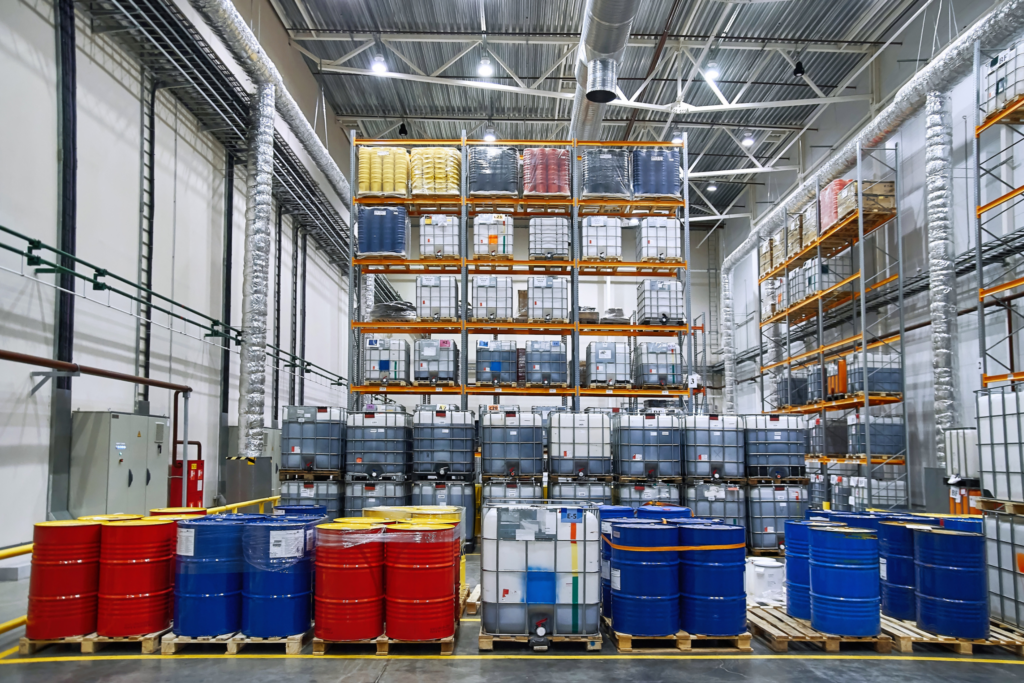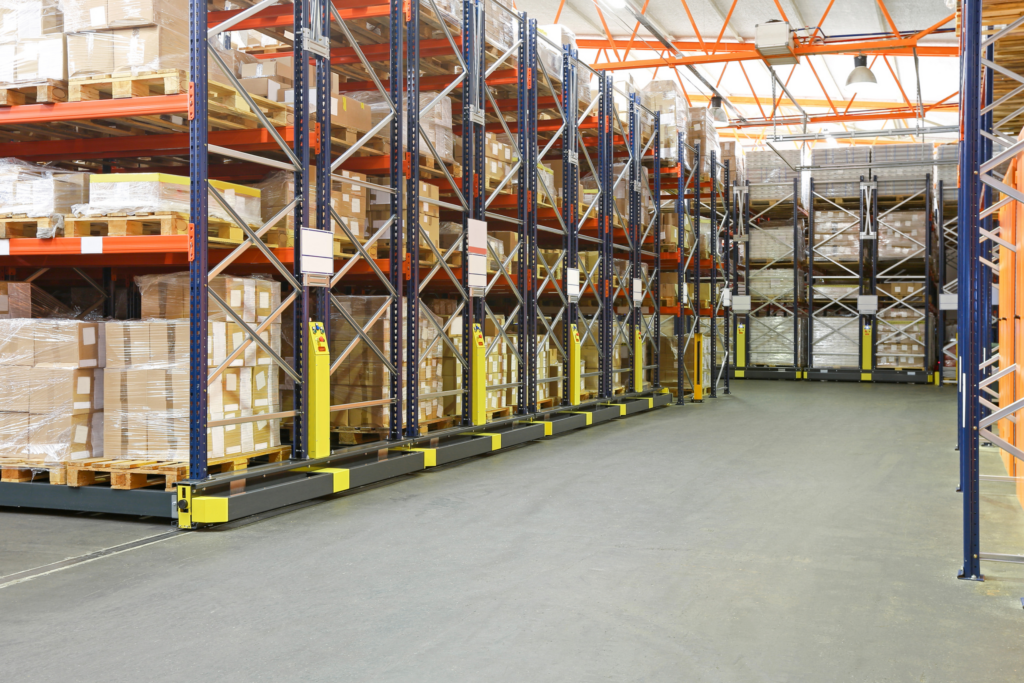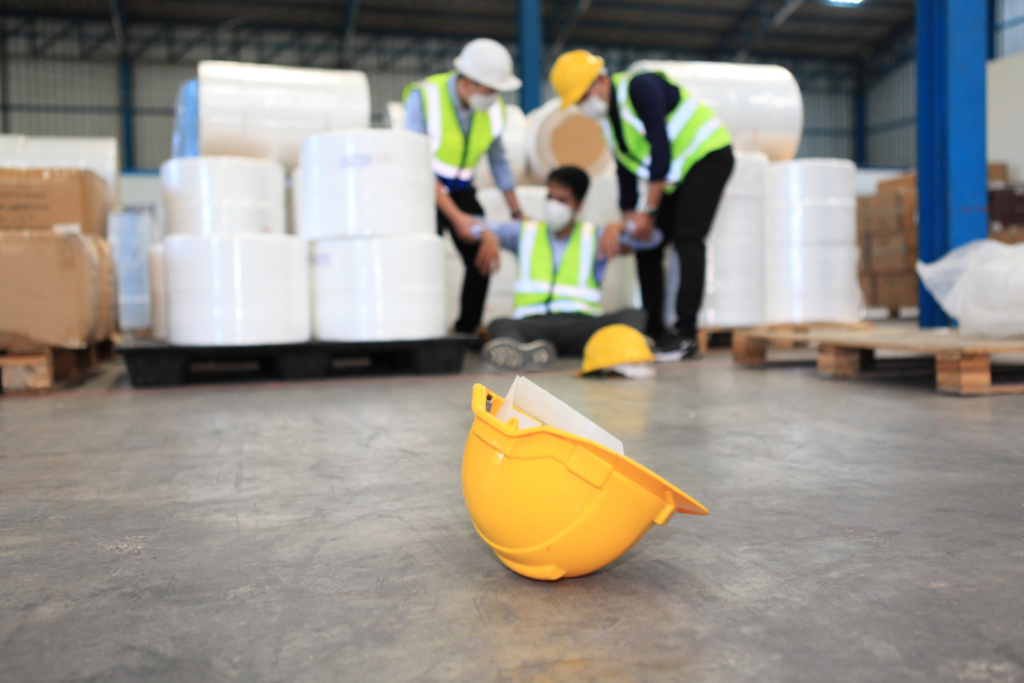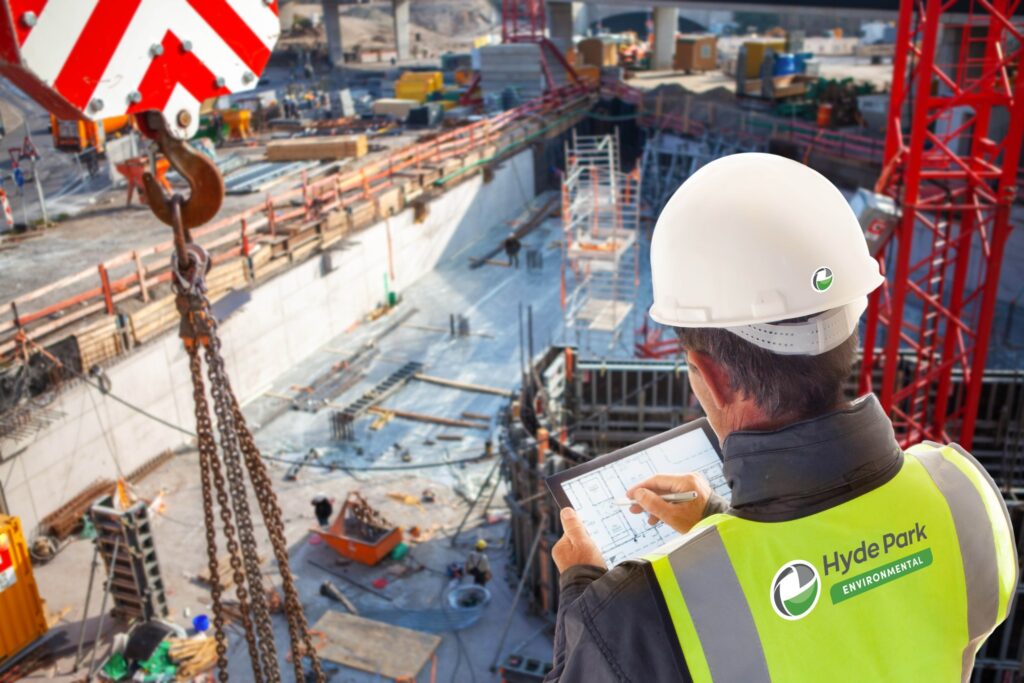Warehousing and storage is a hazardous industry, as the work creates unique health and safety hazards that must be properly identified and managed in order to prevent harm. This means warehouse health and safety should be top priority for any business in this sector. According to The Health and Safety Executive (HSE) the main non-fatal injuries by the most common accident kinds are:
- Slips, trips and falls
- Handling, lifting or carrying
- Struck by moving object
- Acts of violence
Following Union led research that found an Amazon Warehouse in Scotland to be among the worst in the UK for injuries with an increase of 27% in injury reports in 2020/2021, we discuss some of the main hazards and how to manage the risks to ensure warehouse health and safety.
Hazardous Substances

Managing hazardous and dangerous substances in the workplace can be a complex area of workplace safety. Certain items in a warehouse can be classified as hazardous or highly flammable. Exposure to some of these chemicals through leaks or spillages could cause burns, skin conditions, slips & falls or could be harmful if inhaled.
How to manage hazardous substance risks:
- Obtain information on the risks associated with all substances stored and used on the premises from the Safety Data Sheet (SDS) or the manufacturer’s label and follow any specific storage instructions.
- Provide special storage solutions if necessary e.g. a fire resistant store or cabinet.
- Inspect substances on delivery to ensure packaging is intact, devise safe handling procedures and store in original containers.
- Provide appropriate spill response equipment, including spill kits.
- Devise a spill response procedure for cleaning up spillages. Check out our Seven Steps to Spill Response and Chemical Spill Procedure Guide for more guidance.
- Provide staff with safety training such as Spill Kit Training, and Personal Protective Clothing (PPE) e.g. gloves and masks.
- Use safety signage. Employers are legally required to provide safety signs if there is a significant risk that can't be avoided or controlled in any other way, such as through safe systems of work or engineering controls.
Storage and Racking

A variety of systems are used for storing goods in warehouses, from pallets to static racking. The method of storage depends on the shape, size and fragility of the items.
Incorrectly stacked items may result in falling objects injuring the staff below. Overloading a storage system, ignoring a damaged system and using unsafe methods of stacking (e.g. not using a ladder) may lead to collapse which is bad practice warehouse heath and safety
How to manage storage & racking risks:
- Stack goods securely on shelves or racking, with the heaviest items at the bottom.
- Racking should be capable of supporting the loads and is properly secured.
- Ensure racking is properly maintained and is protected against mechanical damage from Fork Lift Trucks (FLTs) etc.
- Regularly inspect pallets used for storage and remove damaged ones immediately.
- Organise racking in aisles to allow for safe access to goods, movement of FLTs etc.
- Train staff in safe methods of stacking and retrieval.
- For manual access, provide proper safety ladders and inspect for damage regularly.
- If using FLTs to access goods, ensure that goods are stacked and retrieved in pallets, or that a safety cage is provided for hand picking.
- Never allow anyone to stand on the forks of a FLT.
- Consider the use of safety footwear and hard hats.
Loading and Unloading

Loading and unloading can be very dangerous as machinery can seriously hurt people. Heavy loads, moving or overturning vehicles and working at height can all lead to injuries or death.
How to manage loading and unloading risks:
- Provide a safe loading and unloading area that is clear of other traffic, pedestrians and people not involved in the loading and unloading.
- The area should be level to maintain stability trailers should be parked on firm, level ground.
- If trailer dock levellers are used, ensure they are kept in a raised position when not in use.
- Regularly maintain loading and unloading equipment and check for damage.
- Loads should be secured, or arranged so that they do not slide around.
- No vehicle should be loaded beyond its rated capacity or beyond the legal limit of gross weight.
Manual Handling

Improper manual handling is the most common cause of injury in warehouses. Workers who repetitively handle or lift materials risk developing work-related musculoskeletal disorders (MSDs) such as pain and injuries to arms, legs and joints, and repetitive strain injuries of various sorts. There is also the risk of back injury from lifting and moving heavy or bulky items of stock.
How to manage manual handling risks:
- Assess all of the manual handling operations that your staff perform, i.e. lifting, carrying, pushing and pulling.
- Ask yourself could loads be handled in a different way. For example, can a process be carried out without lifting.
- Use mechanical devices where possible, e.g. trolleys, pallet movers, FLTs, conveyors, scissor lifts etc.
- Change the work routine to avoid excessive work rates and tight deadlines.
- Improve the working environment – more space, better flooring, extra lighting or changing the air temperature can make manual handling easier and safer.
- Make sure the person doing the lifting has been trained to lift as safely as possible.
Slips, Trips and Falls

During the working day busy warehouses are a hive of activity, with inventory being moved all day long which can lead to a messy environment. Uneven, slippery or obstructed floor surfaces, trailing cables and poor general housekeeping may lead to accidents and poor warehouse health and safety conditions.
How to manage slips, trips and falls risks:
- Keep passageways, aisles, stairs and delivery areas clear.
- Dispose of loose packaging and bindings properly.
- Clean up spillages immediately and display warning signs.
- Fasten cables securely to the floor or re-route overhead if possible
- Make sure floors are level. Uneven flooring can cause people to lose their footing, especially if carrying a load.
Moving Vehicles and Forklifts
The use of vehicles and forklifts are vital to efficient operation of warehouses and storage facilities. However, the movement of delivery vehicles and FLTs around warehouses accounts for a large proportion of warehouse health and safety accidents e.g. collision with people, collision with other vehicles and overturning of FLTs. Ensure warehouse safety by introducing the following safety procedures.
How to manage moving vehicles and forklift risks:
- Devise one-way traffic systems to minimise the need for drivers to reverse and maximise visibility.
- Try to separate vehicles and people e.g. by using clearly marked, well planned, traffic routes both indoors and externally.
- Drivers should not exceed 5mph. Put up signs to remind them to reduce the risks.
- For vehicles likely to be reversing in close proximity to people, fit warning lights and audible alarms.
- Properly train and authorise all drivers.
- No one under 18 should operate a forklift.
- Issue sufficient information and instruction to visiting drivers.
- Restrict access to dangerous areas such as loading/unloading bays.
- Surfaces over which vehicles are driven are even should be even.
- Check vehicles regularly and ensure they are properly maintained by professionals.
- Ensure FLTs are not overloaded to avoid overturning.
Please note that this list is by no means exhaustive and will vary according to the particular type of premises and operation.
Arrange a Site Survey

At Hyde Park Environmental we help businesses in the warehousing, storage and distribution sector identify the right solutions for controlling and storing hazardous substances.
Arrange a Site Survey with us at a time that is convenient to you. This is always helpful for our customers as we can better understand the unique solutions that you may require along with any other pre-sales questions.



 Price Match Promise
Price Match Promise Same Day Despatch
Same Day Despatch On Site Support
On Site Support Account Managers
Account Managers